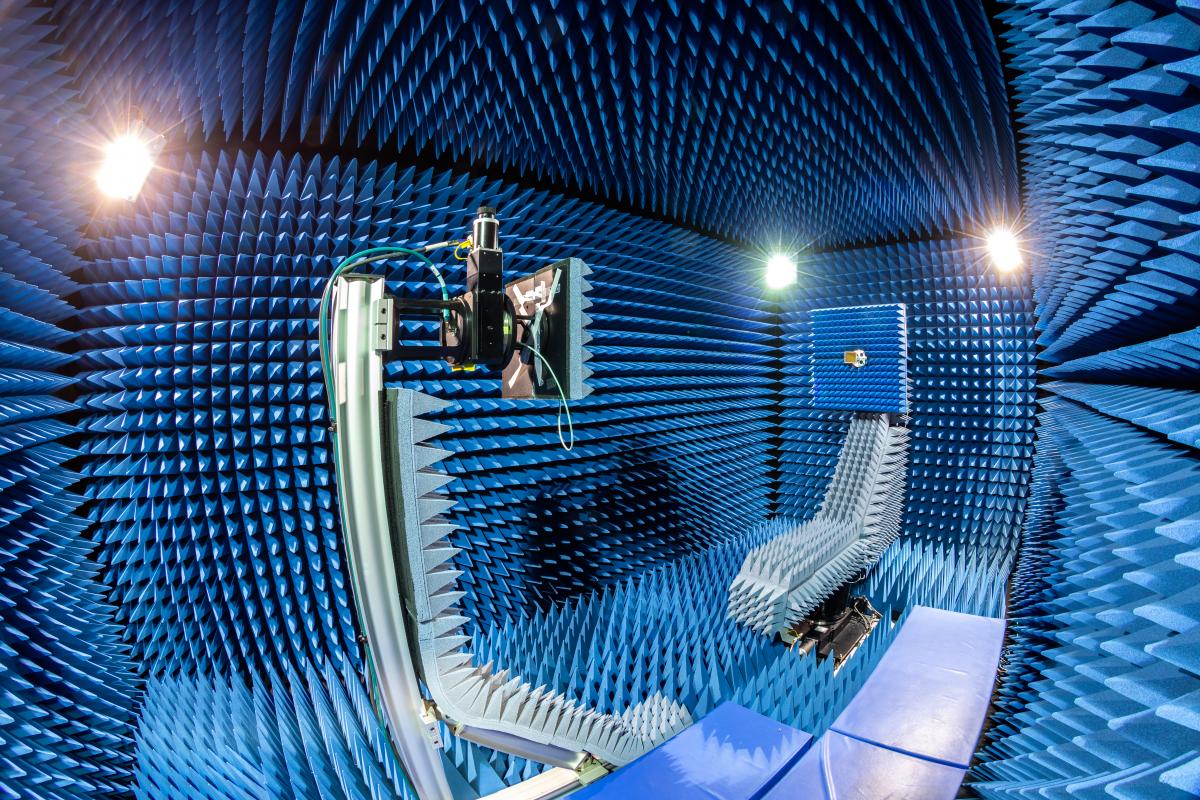August 22, 2023 - Radar Signal Simulation (PDW / EW) | Model 875 Vector Signal Generator
In this modern day, radars are used in nearly every aspect of our lives. For instance, Radar Systems are utilized in weather monitoring, aviation, automobiles, autonomous vehicles, and especially military applications. Radar Systems are also an integral part of technological advancements in Electronic Warfare (EW), which dates back as early as the 1900s. However, in order to replicate the behavior of Radar Systems, Radar System Simulation is required to encapsulate the controlled environment of large-scale experimentation. In this technical blog post, we will discuss a specific subset of Radar System Simulation, called Radar Signal Simulation, and observe its synergy with Berkeley Nucleonic Corporation’s state-of-the-art Vector Signal Generators.

Understanding Radar Signal Simulation
Radar System Simulation (RSS) is a method to test the detection capabilities of aircraft, ships, submarines, and land vehicles against hostile threats. The process involves creating a virtual environment where the interactions between radar signals and various targets are modeled. RSS involves simulating the creation, transmission, propagation, and reception of radar signals. The primary goal of radar signal simulation is to generate realistic radar signals that can be used for testing signal processing algorithms, evaluating radar performance, and developing radar operators.
How Radar Signal Simulation Works
Radar Signal Simulation operates on the principle of combining knowledge from radar theory, electromagnetic wave propagation, signal processing, and target modeling to create a theoretical representation of radar operations. This includes modeling factors such as signal modulation, pulse repetition frequency (PRF), pulse width, carrier frequency, Doppler effects, and noise interference.
In order for precise measurements to be made, specific models and environments need to be emulated. Here are a few examples of Radar Signal Simulation environments:
Free-field - Anechoic Chambers are precision acoustical measurement instruments, typically seen in controlled laboratory, indoor settings. In a free-field space, radar signals are allowed to propagate without reflection or noise inference due to a special lining surrounding the interior boundaries of the chamber. Absorber material is used to negate wavelengths of various frequencies.
Maritime - Open water environments may be of interest to Navy EW applications. The effects of sea clutter, wave reflections, and varying sea states must be taken into account to ensure proper radar signal transmission and reception. Ocean depth may also be desired for submarine radars to detect underwater targets, which involves a distinct subset of propagation characteristics unique to underwater environments.
Aerial and Mountainous Terrains - Similar to Maritime, Aerial and Mountainous Terrains are not as easily replicable, but an ideal environment for Airforce and Military EW applications. Detecting targets in-air and on-surface are two heavy challenges. In aerial or satellite scenarios, modeling objects at varying altitudes will require considering factors like atmospheric conditions and free space propagation. Furthermore, radar signal simulations can mimic the behavior of radar signals in environments with uneven terrain or obstructions. Both of which may contribute to reflections and shadowing effects.



From left to right: Anechoic Chamber; Maritime SONAR Scan, and Mountain Scan
On top of the modeling factors listed above, Pulse Descriptor Word (PDW) is an important measurement parameter of Radar Signal Simulation. PDW is the measurement of radar pulses condensed into a single data packet through digital techniques. For further interest in PDW, please go ahead and read our technical blog post on Pulse Descriptor Word Agility.
Vector Signal Generators (VSGs) in Radar Signal Simulation
Vector Signal Generators (VSGs) are required to simulate various radar signals to test and evaluate the performance of electronic countermeasures (ECM) and electronic support measures (ESM) systems. VSGs are commonly used in radar signal simulation due to their versatility, precision, and ability to generate complex and modulated signals. Here’s how VSGs contribute to radar signal simulation:
Signal Realization - Radar signals in practical EW applications are multifaceted, featuring variations in amplitude, frequency, phase, and modulation. VSGs offer the flexibility to generate custom waveforms, closely mimicking real-world EW radar conditions. This adaptability ensures that simulations accurately mirror the diverse EW environments encountered in the field.
Modulation and Dynamic Scenarios - VSGs can replicate various modulation schemes used in Radar Signal Simulation, such as AM, FM, and PM, to achieve different operational modes. This enables simulations of a wide range of radar behaviors. Additionally, VSGs can account for dynamic scenarios involving moving targets and Doppler shifts, ensuring simulations capture the effects of relative motion accurately.
Phase Coherence - In scenarios where radar systems employ multiple antennas or channels, VSGs with multi-channel capabilities become indispensable. These generators can emulate the behavior of complex radar systems and maintain precise phase synchronization between channels, which is crucial for simulating phased-array radar setups.
In essence, VSGs empower radar engineers, researchers, and operators in the realm of EW to comprehensively assess EW radar systems under diverse conditions, including scenarios involving PDWs. Their ability to faithfully replicate the intricacies of radar signals ensures that simulated outcomes closely align with real-world EW scenarios, thus contributing to enhanced radar system performance and innovation. For those seeking state-of-the-art performance and cost-effectiveness, the Model 875 by Berkeley Nucleonics emerges to be the cutting-edge VSG in the market.
Or “For those seeking state-of-the-art performance and cost-effectiveness, the Model 875 by Berkeley Nucleonics emerges to be the cutting-edge VSG in the market.”

